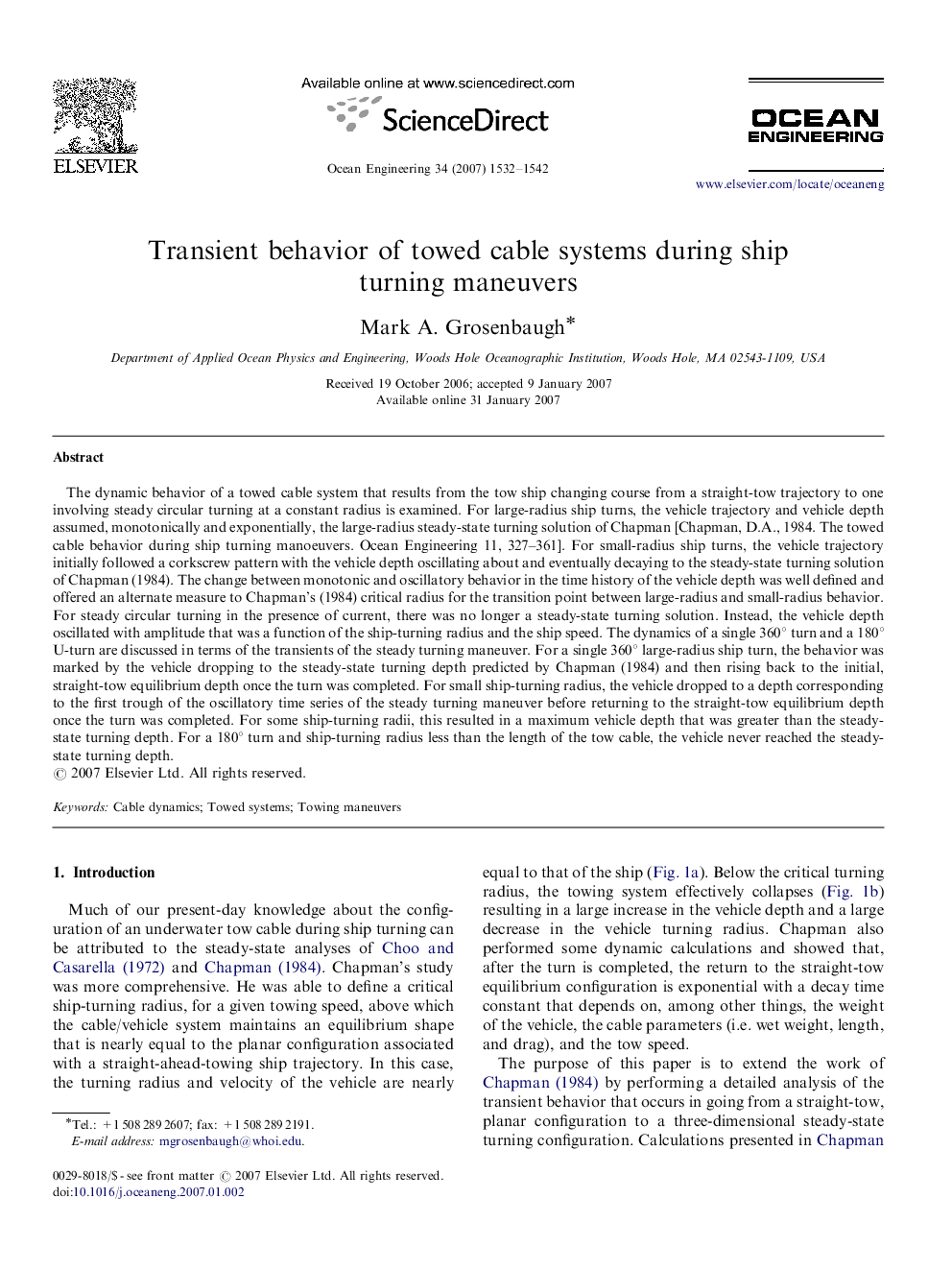| کد مقاله | کد نشریه | سال انتشار | مقاله انگلیسی | نسخه تمام متن |
|---|---|---|---|---|
| 1727013 | 1520778 | 2007 | 11 صفحه PDF | دانلود رایگان |

The dynamic behavior of a towed cable system that results from the tow ship changing course from a straight-tow trajectory to one involving steady circular turning at a constant radius is examined. For large-radius ship turns, the vehicle trajectory and vehicle depth assumed, monotonically and exponentially, the large-radius steady-state turning solution of Chapman [Chapman, D.A., 1984. The towed cable behavior during ship turning manoeuvers. Ocean Engineering 11, 327–361]. For small-radius ship turns, the vehicle trajectory initially followed a corkscrew pattern with the vehicle depth oscillating about and eventually decaying to the steady-state turning solution of Chapman (1984). The change between monotonic and oscillatory behavior in the time history of the vehicle depth was well defined and offered an alternate measure to Chapman's (1984) critical radius for the transition point between large-radius and small-radius behavior. For steady circular turning in the presence of current, there was no longer a steady-state turning solution. Instead, the vehicle depth oscillated with amplitude that was a function of the ship-turning radius and the ship speed. The dynamics of a single 360° turn and a 180° U-turn are discussed in terms of the transients of the steady turning maneuver. For a single 360° large-radius ship turn, the behavior was marked by the vehicle dropping to the steady-state turning depth predicted by Chapman (1984) and then rising back to the initial, straight-tow equilibrium depth once the turn was completed. For small ship-turning radius, the vehicle dropped to a depth corresponding to the first trough of the oscillatory time series of the steady turning maneuver before returning to the straight-tow equilibrium depth once the turn was completed. For some ship-turning radii, this resulted in a maximum vehicle depth that was greater than the steady-state turning depth. For a 180° turn and ship-turning radius less than the length of the tow cable, the vehicle never reached the steady-state turning depth.
Journal: Ocean Engineering - Volume 34, Issues 11–12, August 2007, Pages 1532–1542